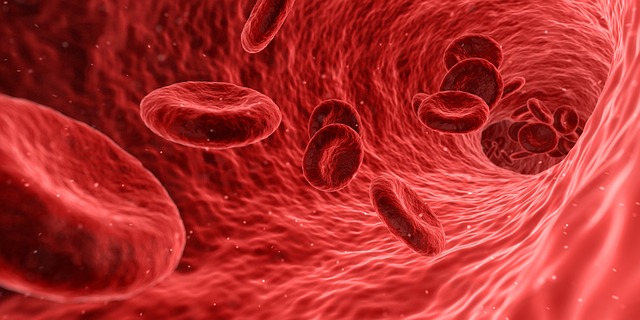Most cancers are solid – a collection of mutated cells that multiply and grow into a tumor. In fact, the six most common types of cancers – lung, breast, colorectal, bladder, melanoma, and prostate – are solid, and they account for nearly one million new cases a year.
On the other end of the spectrum, cancers that are not considered solid are often lumped together in the category of blood cancers. Among these are leukemia and lymphoma. While these two share certain symptoms, there are some differences in their origins, characteristics, and treatments.

Leukemia Vs. Lymphoma
Leukemia and lymphoma have many overlapping concepts, that is why they are often lumped together. One key factor to closely consider is whether the malignancy is commonly linked with high numbers of leukocytes or white blood cells circulating in the bloodstream. Both white and red blood cells are created inside the bone marrow. The term “peripheral blood” is used to describe cells that have made it out of the marrow. The high number of white blood cells in the peripheral bloodstream is typical of leukemia.
Lymphoma occurs in the immune system and affects the lymph nodes and lymphocytes, a type of infection-fighting white blood cell. The two main types of lymphocytes are B cells and T cells. When these cells grow out of control and collect in the spleen, the lymph nodes, and other lymph tissues or neighboring organs, cancer develops, and the entire lymphatic system may be compromised. Doctors typically classify lymphomas into two categories: Hodgkin’s lymphoma and non-Hodgkin’s lymphoma.
Symptoms
As a naturally slow-moving disease, symptoms of leukemia may take time to become apparent. Over the years, the effects of having abnormally high white blood cells combined with the decline of red blood cells can take a toll on the body. The illness can either be chronic or acute. Chronic leukemia is more common and develops at a slower pace during its early stages. In acute cases, the cancer spreads rapidly.
Leukemia can produce symptoms such as bone and joint pain, pale skin due to anemia, weight loss, fever, easy bruising or bleeding due to a low level of platelets, or weakness. Other symptoms include swollen lymph nodes, liver, and spleen.
Patients suffering from lymphomas may exhibit what doctors refer to as B symptoms, which often indicate a faster, more aggressive cancer. These include fever and night sweats, itchy skin, and swollen lymph nodes. For people with non-Hodgkin lymphoma, there may be chest pain, difficulty breathing, and a swollen, painful abdomen. Because the symptoms of lymphoma are often overlooked, it can be difficult to diagnose it at an early stage. It’s important to be aware of how these symptoms change as the cancer worsens.
Causes
Both leukemia and lymphoma originate from issues with your white blood cells. The bone marrow is the body’s factory for these cells. Leukemia starts when your bone marrow generates a high number of mutated white blood cells that don’t die off in the way that typical aging blood cells do. Instead, they keep multiplying and ultimately take over healthy red blood cells. This situation becomes problematic since your body depends on red blood cells for nutrient and oxygen transport. Like lymphoma, leukemia may also begin in the lymph nodes.
Lymphoma often starts in the lymph nodes, which are tiny tissues that help your body ward off infection. Some types of lymphoma may also occur when abnormal white blood cells spread to other parts of the body.
Risk Factors
A risk factor is something that increases a person’s chance of developing cancer, be it a behavior, condition, or substance. Most cancers are the result of various risk factors, but sometimes leukemia develops even for those who do not have any of the attributes listed by cancer societies. There is convincing evidence that the following factors increase your risk for leukemia:
- Smoking
- High levels of radiation
- Previous chemotherapy and radiation therapy
- Breathing in benzene, a chemical found in unleaded gasoline
- Contact with formaldehyde
- Family cancer syndromes like Fanconi anemia, Bloom syndrome, down syndrome, and ataxia-telangiectasia
According to statistics, men are more likely to develop leukemia than women. The chance of having the disease also increases with age, but it is also the most common childhood cancer. Around 2,700 children are diagnosed in the US each year.
Most diagnosed cases of lymphoma have no known cause. However, some people are still considered at a higher risk. The risk factors for non-Hodgkin’s lymphoma include:
- Children and infants, and people over the age of 60
- White Americans are more at risk than their African-American or Asian-American counterparts
- Infections such as the Heliobacter pylori, human T-cell leukemia/lymphotropic virus (HTLV-1), hepatitis C, or the Epstein-Barr virus (EBV)
- Radiation and chemical exposure especially with fertilizers, pesticides, and herbicides
- Autoimmune diseases like celiac disease and rheumatoid arthritis
Common risk factors for Hodgkin’s lymphoma are:
- Immunodeficiency or HIV
- Infectious mononucleosis
- History of lymphoma in the family
- People between the ages of 20 and 30
Diagnosis
Leukemia is usually suspected when your simple blood test shows abnormal counts of different blood cells. Your physician may order a bone marrow biopsy to confirm the diagnosis. This procedure may be a little uncomfortable, but it is relatively quick and typically lasts around 20 minutes.
To diagnose lymphoma, doctors often require a biopsy from the affected tissue. In some cases, the patient may have to be unconscious with general anesthesia. Often the doctor only numbs the specific site of the biopsy. If you have lymphoma, a body scan or bone marrow biopsy will help determine the stage of your cancer.
Treatment
Treatment options depend on the extent of the cancer diagnosis, be it with leukemia or lymphoma. Currently, stem cell transplants, radiation and chemotherapy, and targeted therapy are the main treatments available for preventing abnormal cells from forming in the lymph nodes and blood.
Healthcare providers have an easier time treating cancer when it is detected early. Since leukemia and lymphoma are slow-acting, there is more time to catch them early and improve the patient’s outlook. Leukemia and Lymphoma Society’s 2004-2010 study showed a 60 percent overall five-year survival rate for leukemia patients and 88 percent for lymphoma patients.


